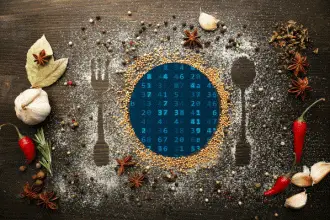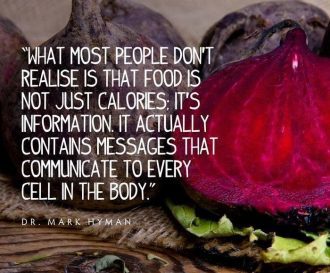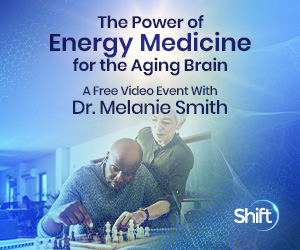By Sayer Ji
Contributing writer for Wake Up World
Despite being the condition for the possibility of all life itself, food is rarely appreciated for its true power. Far beyond its conventionally defined role as a source of energy and as building blocks for the body-machine, fascinating new discoveries on the frontiers of science reveal that food is also a powerful source of information.
We are all hardwired to be deeply concerned with food when hungry, an interest which rapidly extinguishes the moment we are satiated. But as an object of everyday interest and scientific inquiry, food often makes for a bland topic. Nonetheless, food is one of the most fascinating and existentially important topics there is, and in many ways, until we understand the true nature of food, and how it is still the largely invisible ground for our very consciousness, we will not be able to understand our own nature, or our own destiny.
How We Got Here
Modern Western concepts of food are a byproduct of a centuries old process of intense secularization. Food is now largely conceived in terms of its economic value as a commodity and its nutritional value as a source of physical sustenance. In the latter regard, its value is quantified through the presence and molecular weight of macro- and micronutrients or its “fat-inducing” calories. In the process of reducing food’s value to these strictly quantitative dimensions, it has lost its soul. Food is no longer believed to possess a vital life force, much less a sacred one. But the etymology of sacred, namely, to make holy, and the etymology of holy, which connects to heal, whole, health, implies correctly that food has the ability to “make us whole.”
Food as Nourishment On All Levels
If talk of food as “sacred” and “whole-making” sounds pseudo-scientific, consider how Nature designed our very first experience of nourishment (if we were fortunate enough to not have been given a bottle full of formula): breastmilk taken from the mother’s breast was simultaneously a nutritional, physical, thermic, emotional, genetic, and spiritual form of nourishment. Food, therefore, can and should never truly be reduced to an object of biochemistry.
And so, as we dig deeper, we discover that the topic of food is a highly cerebral one. And this begins with any simple act of eating, albeit in a slightly different way. It’s called the cephalic phase of nutrition, “in your head,” which reflects how you are actually experiencing the food: is it delicious? Are you feeling pleasure? These “subjective” aspects profoundly affect the physiology of digestion and assimilation. My colleague Marc David has dedicated many years to waking people up to this amazing process. Food, therefore, begins in a context that transcends merely physiochemical conditions and concerns. The nocebo and placebo effects, which are powerful forces in the setting of clinical medicine, also apply to the field and experience of nutrition. And therefore, it is hard to ignore how this important layer of nutrition: the first-hand experience, and even our intention and level of gratitude, has been lost in the fixation on the chemistry and reductionism of food science.
But the inquiring mind wants more specific scientific answers to the question: how does food makes us whole? How does its arrangement of atoms possess such extraordinary power to sustain our species? Why can’t we answer the most rudimentary questions that go back to ancient times, such as the still timeless mystery and miracle of how the bread is transmuted into blood and flesh?
Perhaps, it is the information (and intelligence) within food that will help explain some of this mystery. After all, information literally means “to put form into.” This understanding will add much needed depth and nuance to conventional nutritional concepts where food is still conceived as a bunch of essentially dead and uninteresting atoms and molecules.
The Old Story of Food as a Thing:
Our concept of food is still generally constrained to the Newtonian view that all things are comprised of atoms, externally related to one another, and built up from there into molecules, cells, etc. The story goes that when we eat things, digestion breaks them down into their constituent parts and our bodies then take these parts and build them back up. This very mechanical, simplistic view, while valid in limited ways, no longer holds true in light of the new biology and science. Along with this view of food as matter, is the correlate perspective, that food can be “burned” for energy and that like a furnace or a car food provides “fuel” measured by calories to drive its engines along. Of course, this is reinforced by nutrition facts labels which make it appear that not much is going on beyond caloric content and the presence or absence of a relatively small set of essential nutrients such as carbohydrates, fats, proteins, vitamins, or minerals, defined by their molecular weight.
This reductionistic view of food I will call, in recognition of Charles Eisenstein’s thinking, “the old story of food,” and this narrative focuses on two primary dimensions.
Food as Matter:
If we are looking at the “material” aspects of food, we are looking at the physically quantifiable or measurable elements. You could not, for instance, objectively “measure” taste, as it differs qualitatively from person to person (so-called “subjective experience). And so, nutritional science focuses on what is presumably “out there” objectively, namely, quantities like the molecular weight of a given substance, e.g. 50 mg of ascorbic acid, 10 grams of carbohydrate, or 200 mg of magnesium. In reality, these objective quantities are influenced by the type of measuring device we use — and so, there really are no ontologically pure (i.e. “really real”) material aspects out there in and of themselves. But for the purposes of clarity, let us assume these material aspects are real, independent of the measuring device or person measuring. These material aspects, while providing information, are not considered to be “informational” in the sense of giving off distinct messages to the DNA in our body, altering expression. They are considered part of the physical world, and therefore while providing building blocks for our body, including its DNA, they are not understood to alter or control the expression of the DNA in a meaningful way. Food, therefore, is considered “dead,” and not biologically meaningful beyond its brick and mortar functions in building up the body-machine.
The other primary dimension in this old view is…
Food as Energy:
Energy is commonly defined as the power derived from the utilization of physical resources, especially to drive machines. In this view, food provides the fuel to power the body-machine. Food energy is conventionally defined in chemical terms. The basic concept is that animals like humans extract energy from their food and molecular oxygen through cellular respiration. That is, the body joins oxygen from the air with molecules of food (aerobic respiration), or without oxygen, through reorganization the molecules (anaerobic respiration). The system used to quantify the energy content of food is based on the “food calorie,” “large calorie,” or kilocalorie, equal to 4.184 kilojoules. 1 food calorie is the amount of heat required at a pressure of one atmosphere to raise the temperature of one gram of water one degree Celsius. The traditional way to ascertain the caloric content of a sample of food is using a calorimeter, which literally burns the food sample to a crisp, measuring the amount of heat given off (its caloric content). In order to account for the varying densities of material within a sample, e.g. fiber, fat, water, a more complex algorithm is used today. (alt definition: an amount of food having an energy-producing value of one large calorie)
Again, in this view, food while providing information (caloric content), is not an informational substance in the biological sense (e.g. DNA), but simply a source of energy which can fuel the body-machine.
The New Story — Food as Information:
The new view of food as replete with biologically important information, is based on a number of relatively new discoveries in various fields of scientific research.
For instance, the discovery that food contains methyl groups (a carbon atom attached to three hydrogen atoms (CH3)) capable of methylating (silencing) genes, brought into focus the capability of food to profoundly affect disease risk as well phenotypal expression. If folate, B12, or Betaine — 3 common food components — can literally “shut off” gene expression with high specificity, food becomes a powerful informational vector. One which may actually supervene over the DNA within our body by determining which sequences find expression.
This discovery of nutrition’s prime role in epigenetics opened up an entirely new realm of research, including the disciplines of nutrigenomics, which looks at nutrient-gene interactions, and nutritional genomics, which looks at gene-based risks that provide individualization of nutritional recommendations. Suddenly, almost overnight, food became infinitely more interesting to geneticists, biologists, and medical professionals, in that it as an information vector it could affect, and in some cases control the expression of the DNA, biomedicine’s “holy grail.”
Food’s role as a source of methyl group donors capable of epigenetic modulation of DNA expression is a powerful demonstration of its informational properties, but this is not the whole story…
Food also contains classical genetic information vectors, such as non-coding RNAs, which like methyl donors, have the ability to profoundly alter the expression of our DNA. In fact, there are estimated to be ~100,000 different sites in the human genome capable of producing non-coding RNAs, far eclipsing our 20-25,000 protein-coding genes. These RNAs, together, orchestrate the expression of most of the genes in the body. They are, therefore, supervening forces largely responsible for maintaining our genetic and epigenetic integrity.
These RNAs are carried by virus-sized microvessicles called exosomes found in all the food we eat (they are secreted by all plant, animal, and fungal cells), and survive ingestion to significantly alter our gene expression. In 2012, a groundbreaking study titled, “Exogenous plant MIR168a specifically targets mammalian LDLRAP1: evidence of cross-kingdom regulation by microRNA, found that exosomal miRNA’s from rice altered LDL receptors in the livers of Chinese subjects, effectively proving cross-kingdom regulation by microRNA exists, and is occurring on an ongoing basis through the food we eat. Another study, this time in animals, found that exosomes in commonly consumed foods, e.g. grapefruit, orange, affect importnt physiological pathways in the animal’s bodies. Essentially, these food components ‘talk’ to animal cells by regulating gene expression and conferring significant therapeutic effects. The ability of exosomes to mediate the transfer miRNAs across kingdoms redefines our notion of the human species as genetically hermetically sealed off from others within the animal, plant, and fungi kingdoms. In this sense, food borne exosomes are the mechanism through which all living things in the biosphere are intimately interconnected, perhaps even adding a new explanatory layer to how the Gaia hypothesis could be true.
Another important though overlooked mechanism through which food components may carry and transfer energy and information is through so-called prionic conformational states (protein folding patterns). Prions have been primarily looked upon as pathological in configuration and effect. A classical example is the beta sheet formation of brain proteins in Alzheimer’s. These secondary protein conformations act as a template through which certain deleterious folding states are transferred laterally between proteins. But prions are not always pathological. For instance, naturally forming prions are essential for the health of the myelin sheath in the brain, and likely perform many other important though still largely unknown functions. So, when we look at the phenomena neutrally, the fact that the conformational state (folding state) of a protein can hold and transfer laterally information essential to the structure and function of neighboring proteins without needing nucleic acids indicates just how important the morphology of food may be. It is possible, therefore, that food, depending on how it is grown and prepared, will have vastly different protein folding patterns which will carry radically different types of biologically vital information. This is another example where one can not exhaustively assess the value of food strictly through quantitative methods, e.g. measuring how much protein there is by weight, but need also to account for qualitative dimensions, e.g. the vast amounts of information contained within secondary, tertially and quaternary conformational states of these protens.
The “Microbiome of Food” is Full of Information.
Acknowledging the role the microbiome plays in the food we eat further deepens the our understanding of food as information. In fact, the microbiome could be considered food’s most profound informational contribution. When we consider the genetic contribution of all the bacteria, fungi, and viruses, naturally found in food (especially raw and cultured varieties), this represents a vast store of biologically meaningful information. Some of this microbial information can even “jump” laterally from these micro-organisms into our body’s microbiome, conferring to us significant extra-chromosomal “powers,” essentially extending our genetic capabilities by proxy. For instance, a recent study identified a marine bacteria enzyme in the guts of Japanese, presumably a byproduct of having consumed seaweed naturally colonized by it. This marine bacteria enzyme is capable of digesting sulfated polysaccharides — a type of carbohydrate humans are not equippped to digest because it is marine specific. This indicates that the genes provided by these microbes represent a genetic library of sorts, whose contributions may vastly extend the genetic capabilities of our species. Indeed, the human genome only contains genetic templates for 17 enzymes, whereas the gut bacteria contains genetic information capable of producing hundreds of different enzymes. And these are capable of degrading thousands of different carbohydrates! There are actually many other capabilities provided by these “germs,” including the ability to produce vitamins (including vitamin C!) and other essential biocompounds. The microbiome of our food could therefore be considered an information storehouse. To learn more about how this ancient information (even millions of years old) is preserved in raw foods like honey, read my article: Could Eating Honey Be A Form of Microbial Time Travel?
Water as an Information Carrier in Food:
Another extremely important element is the role of water in food. Not only has water been found to carry energy and information, but water has also been identified an instrument of biosemiosis. The water component of food, therefore, could contribute biologically important information — even genetic and epigenetically meaningfully information — without needing nucleic acids to do so.
To learn more about how water has “memory,” and can store and transmit genetic information, read about the DNA teleportation experiment performed by Nobel laurette Luic Montagnier.
As discussed above, conventional food science starts on a completely dehydrated basis, focusing almost exclusively on the ‘dry’ measurable material aspects of the food, or the amount of energy it contains (which ironically requires burning off the water to obtain measurements). All readily edible food is hydrated. Were it not, it would be “dehydrated food,” which is generally not considered ready to eat. As such, we can not talk about biomolecules without considering their hydration shells as integrally and inseparably bound to the “dry” components, e.g. amino acids, fatty acids, sugars. Water has the capacity to carry information and to determine the structuration and therefore functions of the biochemicals and biopolymers it surrounds. Water, which is capable of taking in free energy from the environment (Pollack’s infrared heat), has its own information and energy. This means, therefore, that food qua water content, has the potential to carry relatively vast amounts of information beyond what is found in its material composition itself.
As science progresses, both the quantitative and qualitative elements of water will increasingly be revealed to be vitally important in understanding food as information.
Powerful Implications for the Future of Food and Medicine:
When food is looked upon as a vital source of biologically important information which can inform the expression of our genome, it is much easier to understand how our ancestors considered its creation, production, harvesting, cooking, and consumption sacred.
We can also understand how the seeming poetical relationships between foods and organs they nourish may have emerged, via informational bridges described above (RNAs, Prions, water), making possible their “soul connection.”
Today, with a wide range of industrial farming technologies changing the quality (and informational component) of our food, it is no longer sufficient to look at only the material aspects of these changes. Irradiation, genetic modification, pesticides, soil quality, processing and a wide range of other factors (intention), may greatly alter the informational state and quality of a good without being reflected in overt changes in grosser qualities like caloric and materially defined dimensions.
No longer can we look at the difference, say, between infant formula and breast milk strictly through the material/energetic lens of conventional nutritional analysis. On an informational level, they are qualitati`vely light years apart, even if they have so many similarities in crude nutritional metrics, e.g. similar carbohydrate and caloric content.
This will be true for all areas of food production, and nutrition, where formerly an essentially dead ontology governed the way we understand and interacted with the things we eat. Once we understand the true implications of food as information, our entire worldview will change.
About the author:
Sayer Ji is the founder of GreenMedInfo.com, the world’s leading open access, evidence-based resource supporting natural and integrative health modalities. He is Vice Chairman of the Board for the National Health Federation and Fearless Parent, a Steering Committee Member of the Global GMO-Free Coalition (GGFC), and a reviewer at the International Journal of Human Nutrition and Functional Medicine.
For more, visit GreenMedInfo.com and Facebook.com/GreenMedInfo, or sign up for GreenMedInfo’s free e-Newsletter.
Recommended articles by Sayer Ji:
- Black Seed Oil Puts Deadly Asthma Medications to Shame
- Participating in Drum Circles Improves Health and Quality of Life in Parkinson’s Patients (Study)
- Acupuncture Beats Injected Morphine for Pain: Groundbreaking Study
- Mammography Is Harmful and Should Be Abandoned, Scientific Review Concludes
- “Killer Germs” Obliterated by Medicinal Smoke Smudging, Study Reveals
- 6 Evidence-Based Ways Drumming Heals Body, Mind and Soul
- Coconut Water: A New Alzheimer’s Disease Treatment?
- Turmeric’s ‘Smart Kill’ Properties Put Chemo & Radiation To Shame
- Tylenol Kills Emotions As Well As Pain, Study Reveals
- Beet Juice Boosts Cognitive Function In One Dose
- 13 Evidence-Based Medicinal Properties of Coconut Oil
- Group Drumming Better Than Prozac, Study Suggests
- 25 Cancer Stem-Cell Killing Foods That Are Smarter Than Chemo and Radiation
- Splenda Suppresses Thyroid Function, Promotes Weight Gain

If you've ever found value in our articles, we'd greatly appreciate your support by purchasing Mindful Meditation Techniques for Kids - A Practical Guide for Adults to Empower Kids with the Gift of Inner Peace and Resilience for Life.
In the spirit of mindfulness, we encourage you to choose the paperback version. Delve into its pages away from screen glare and notifications, allowing yourself to fully immerse in the transformative practices within. The physical book enriches the learning process and serves as a tangible commitment to mindfulness, easily shared among family and friends.
Over the past few years, Wake Up World has faced significant online censorship, impacting our financial ability to stay online. Instead of soliciting donations, we're exploring win-win solutions with our readers to remain financially viable. Moving into book publishing, we hope to secure ongoing funds to continue our mission. With over 8,500 articles published in the past 13 years, we are committed to keeping our content free and accessible to everyone, without resorting to a paywall.










